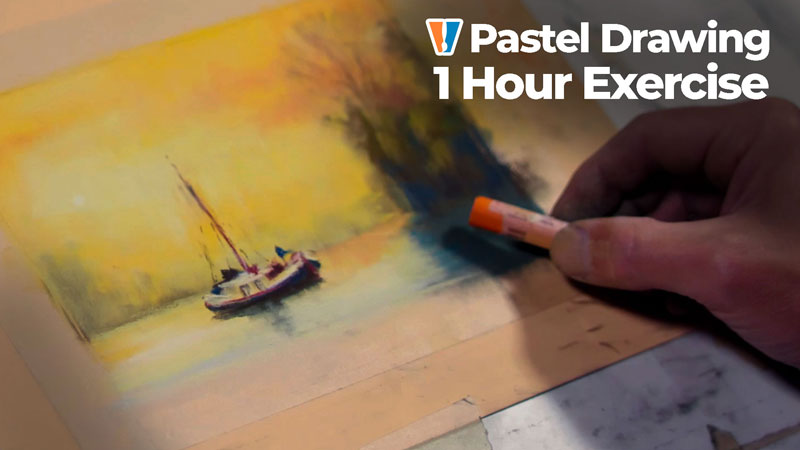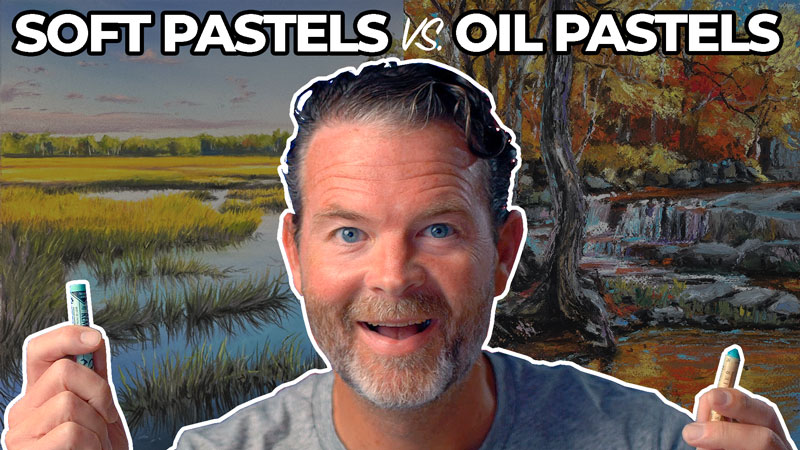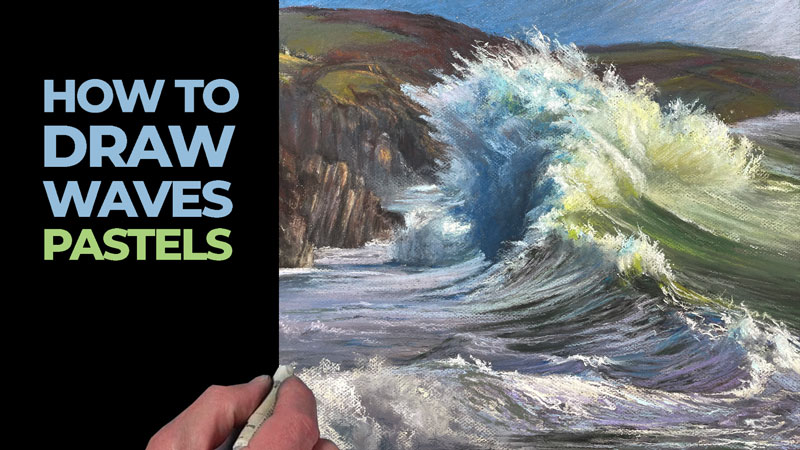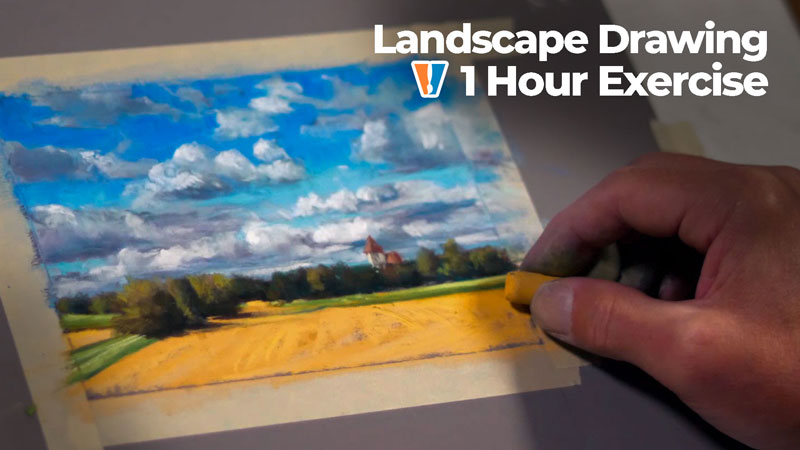Creative Color in Landscape Drawing
In this pastel drawing lesson, we’ll draw a colorful landscape with pastels. We’ll limit the amount of time spent on this drawing to just one hour. Here’s a look at the finished drawing…
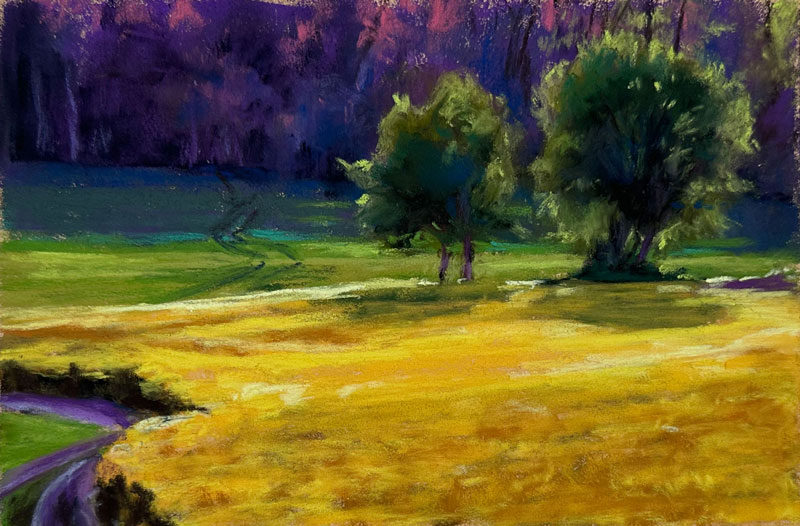
We’ll use a photo reference to complete the drawing. Here’s a look at the photo reference…
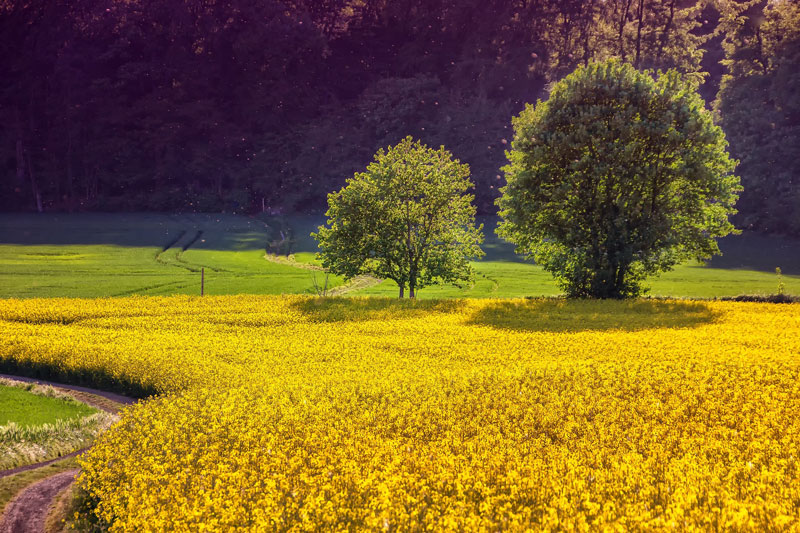
Pastel Materials for This Drawing
Soft pastels are used to complete the drawing. You can use any brand of pastels that you wish to complete the lesson. In this lesson, Rembrandt pastels are layered on PastelMat paper. Rembrandt pastels are high quality soft pastels with a broad variety of colors available. PastelMat paper features a heavy tooth that allows for many layers of pastel applications. Any textured paper with work for this drawing, however working on a toned surface will help to ensure a full range of value.
Making Colors Pop
This drawing features an exaggeration of observed colors. By slightly exaggerating observed colors, we can make our drawings and paintings more interesting and use color theory to create contrast, while preserving harmony.
In this drawing, a secondary color scheme is used to enhance the image. Secondary colors are orange, purple, and green. By limiting the piece to these colors, we create harmony. But due to these colors’ positions on the color wheel, we create contrast. It is the contrast that leads to the “pop” that we want in the finished drawing.
Simplifying Details
It is a misconception that all details must be included in an artwork. Details can be suggested. In this work, details are purposely simplified, placing more attention on the relationships of colors and values. It can be difficult to look past the details that you observe in a subject and instead focus on the shapes. One way to do this is to squint your eyes and observe your subject. By squinting, we remove the details and are left with only the values, colors, and shapes.
By focusing on the shapes that we see, we can create the illusion of form and light, without becoming overwhelmed with the details. This leads to an artwork that is more painterly and expressive. The colors become the “star” instead of the subject itself.
If so, join over 36,000 others that receive our newsletter with new drawing and painting lessons. Plus, check out three of our course videos and ebooks for free.

